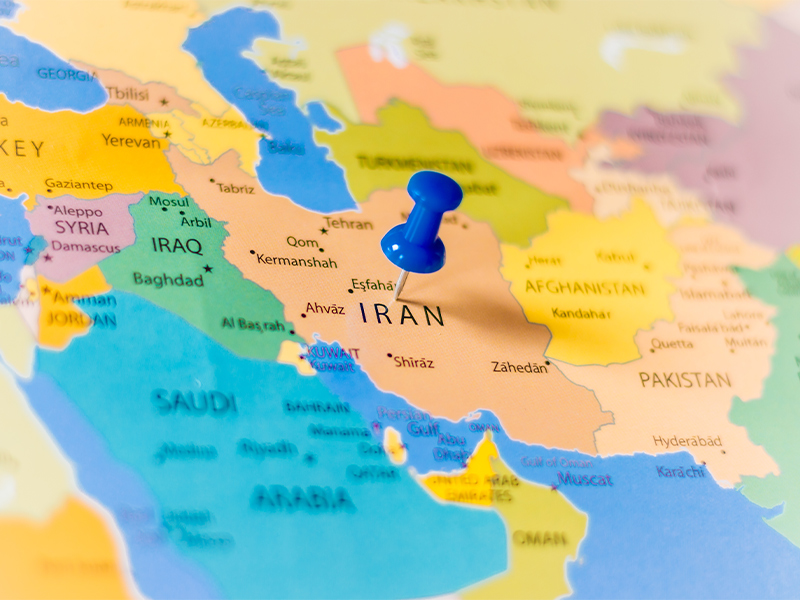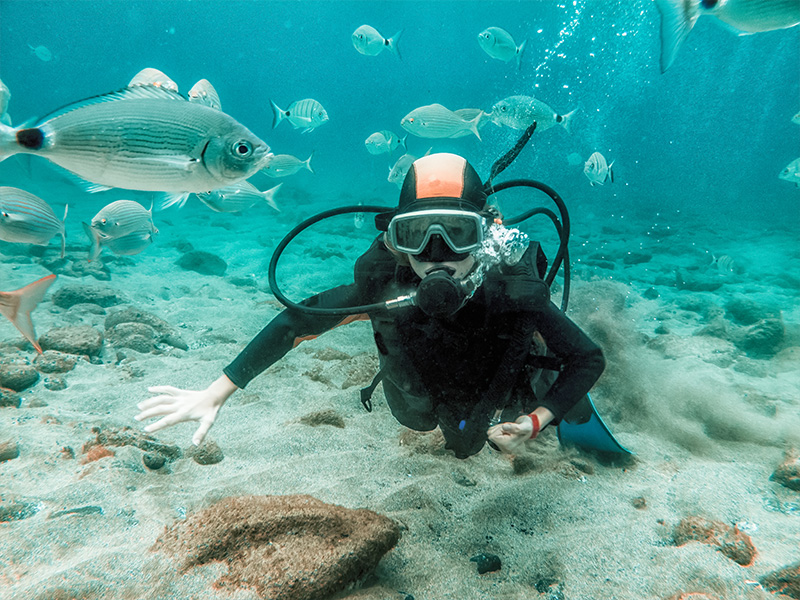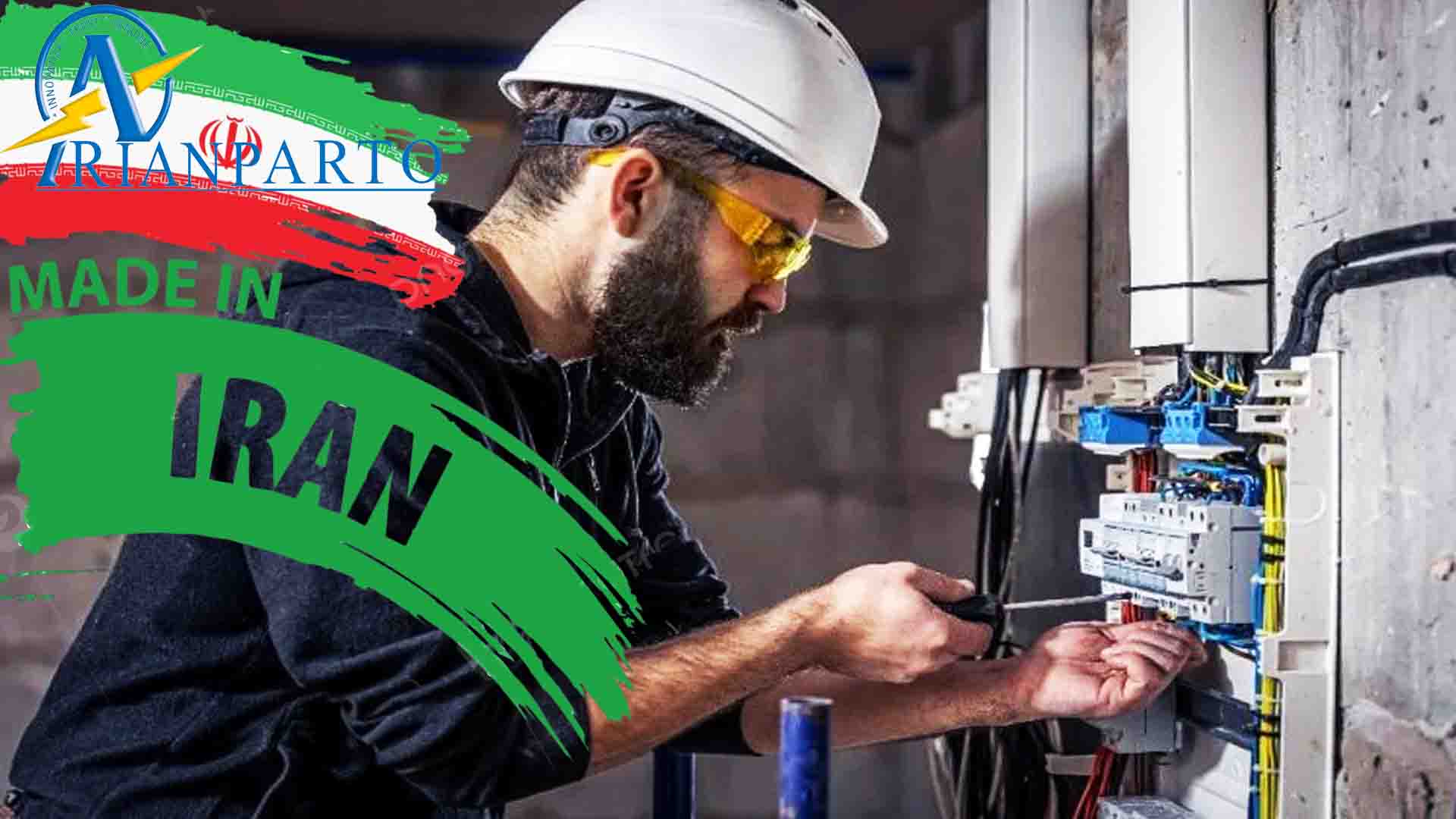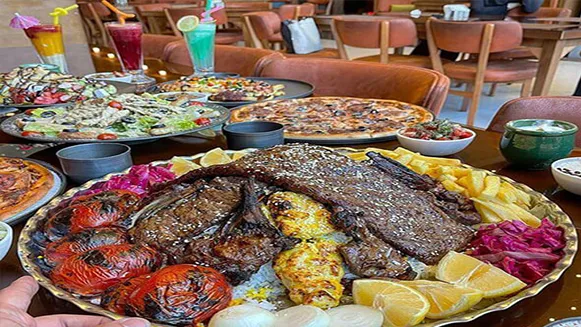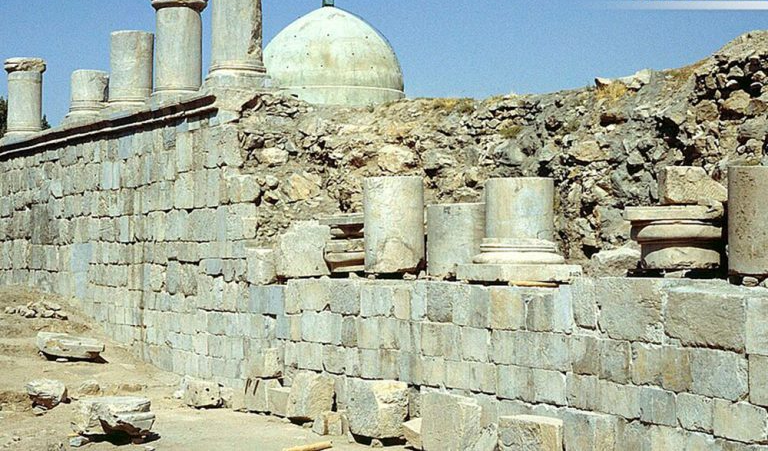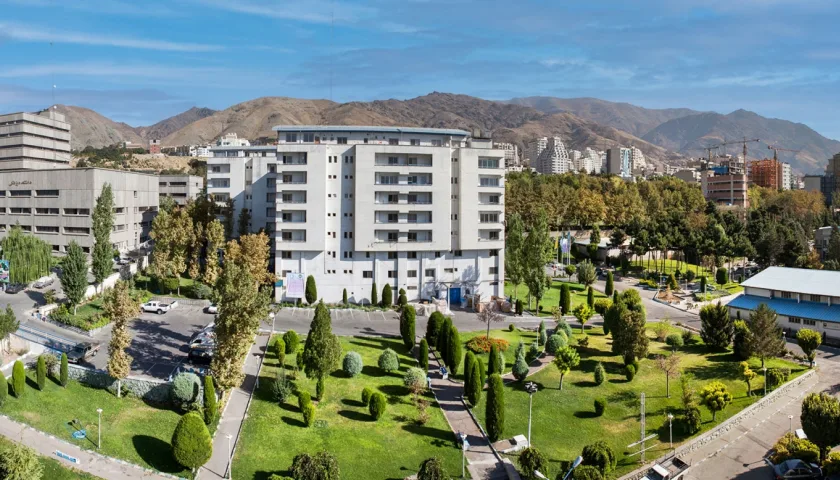Where is Iran ? | Experience Iran’s Warm Hospitality, Rich Culture, and Diverse Landscapes
Iran is located in Western Asia . It borders the Caspian Sea to the north, the Persian Gulf and the Gulf of Oman to the south, Iraq and Turkey to the west, and Afghanistan and Pakistan to the east.
Geography of Iran
With an area of over 1,648,195 square kilometers (the 16th largest country in the world), Iran is located in southwestern Asia and is one of the Middle Eastern countries.
In terms of its geographical location, Iran is situated in the southern half of the temperate northern zone between 25°03′ and 39°47′ north latitude from the equator and 44°14′ and 63°20′ east longitude from the Greenwich meridian. About 90% of the country’s land is located within the Iranian Plateau. The land of Iran is generally mountainous and semi-arid, with an average altitude of over 1200 meters above sea level. Mountains and highlands cover more than half of the country’s area, plains cover a quarter, and cultivated land covers less than a quarter. The lowest internal point with an altitude of 56 meters is located in the Lut Basin, and the highest point is Mount Damavand with an altitude of 5628 meters in the Alborz mountain range. On the southern shore of the Caspian Sea, the elevation of the land is 28 meters below sea level.

Iran is bordered by Turkmenistan, the Caspian Sea, Azerbaijan, and Armenia to the north; Turkey and Iraq to the west; Pakistan and Afghanistan to the east; and the Gulf of Oman and the Persian Gulf to the south. In total, Iran’s perimeter is over 8,731 kilometers, of which 2,700 kilometers is sea border and 6,031 kilometers is land border.
| Fact | |
|---|---|
| Highest Point in Iran | Mount Damavand with an elevation of 5610 meters |
| Longest River | Karun River with a length of 950 kilometers |
| Largest Lake | Lake Urmia with an area of 4868 square kilometers |
| Largest Island | Qeshm Island with an area of 1491 square kilometers |
| Government | The government of Iran is the Islamic Republic, and its National Day is the 22nd of Bahman. Its capital is Tehran. |
| Administrative Divisions | As of August 2011, Iran is divided into 31 provinces, 397 counties, 984 districts, 1154 cities, and 2499 rural districts. |
| Flag | The flag consists of three horizontal stripes of equal size, with green on top, white in the middle, and red at the bottom. The national emblem (the word Allah) in red is placed in the middle of the white stripe. The phrase “Allahu Akbar” in white Arabic script is repeated 11 times along the bottom edge of the green stripe and 11 times along the top edge of the red stripe. |
| Exports | Oil, carpets, fruits, dried fruits (pistachios, raisins, dates), leather and animal skin, caviar, petrochemical products, textiles, clothing, food products |
| Imports | Machinery, metal industries, food, pharmaceuticals, technical services, chemical products |
| Industries | Oil, petrochemicals, textiles, cement and other construction materials, food processing (especially sugar refining and oil extraction), metallurgy |
| Agriculture | Wheat, rice, grains, sugar beets, fruits, oilseeds (pistachios, almonds, walnuts), cotton, dairy products, wool, caviar |
| Currency | Iranian Rial (IRR). 1 Toman = 10 Rials |
| Railways | 9796 kilometers of railway |
| Total Length of Roads | 158,000 kilometers of roads |
| Pipelines | Oil products: 3900 kilometers, Natural gas: 4550 kilometers |
| Ports | Abadan, Ahvaz, Bandar Shahid Beheshti, Bandar Abbas, Bandar Anzali, Bushehr, Bandar Imam Khomeini, Mahshahr, Bandar Turkmen, Khorramshahr, Nowshahr |
Where is Iran and what is its significance?
Iran, officially the Islamic Republic of Iran, is a country in Western Asia. It borders the Caspian Sea to the north, the Persian Gulf and the Gulf of Oman to the south, Iraq and Turkey to the west, and Afghanistan and Pakistan to the east. With an area of over 1.648 million square kilometers, Iran is the 16th largest country in the world. Its diverse geography includes mountains, deserts, forests, and plains.
Ancient Iran
Iran has a rich and ancient history dating back to the Bronze Age. The region was home to powerful empires such as the Achaemenid, Parthian, and Sassanian empires. These empires made significant contributions to art, architecture, science, and philosophy.
Modern Iran
Modern Iran is a complex and dynamic country. It has a population of over 83 million people, and its capital is Tehran. The country is a major producer of oil and gas, and its economy is also based on agriculture, manufacturing, and services.
Culture and Customs
Iran has a rich and diverse culture. The country is home to a variety of ethnic groups, each with its own unique traditions and customs. Iranian culture is known for its hospitality, its love of food, and its appreciation of art and music.
Language and Religion
The official language of Iran is Persian. However, many other languages are spoken in the country, including Azeri, Kurdish, and Arabic. The majority of Iranians are Muslims, and Islam plays an important role in Iranian society.
Climate
Iran has a diverse climate, ranging from desert to subtropical. The summers are hot and dry, while the winters are mild in some areas and cold in others.
Tourism
Iran is a popular tourist destination, with many attractions such as ancient ruins, beautiful mosques, and bustling bazaars. The country is also home to some of the world’s most stunning natural scenery, including the Zagros Mountains and the Caspian Sea coast.
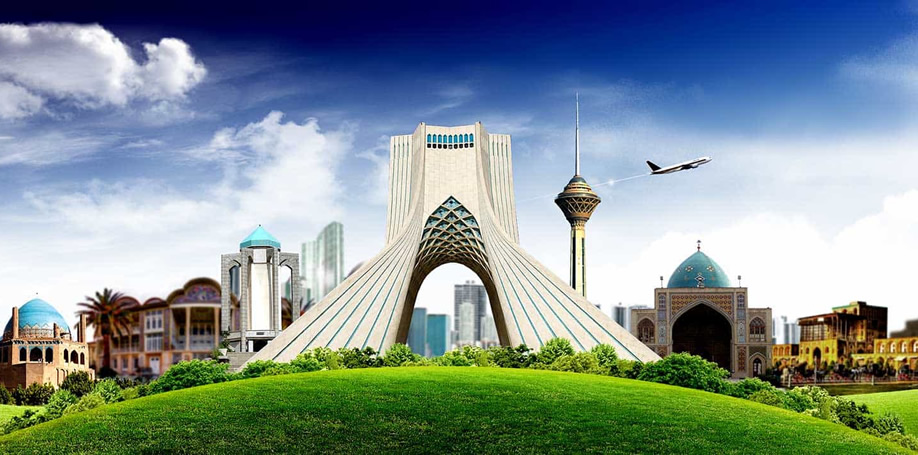
Iran is a fascinating and rewarding country to visit. With its rich history, diverse culture, and beautiful scenery, Iran has something to offer everyone.
This is just a brief overview of some of the important things to know about Iran. If you are interested in learning more, I encourage you to do some further research. There are many books, websites, and other resources available that can provide you with more information about this fascinating country.
Introduction to Iran
A Country with a Rich History and Diverse Culture
Iran, a nation with an ancient history, is situated in the heart of the Iranian Plateau, within the broader cultural sphere of Transoxiana and Mesopotamia. It is located in the western part of the world’s largest continent, in the oil-rich region of the Middle East.
Geographical Location
Iran shares its northern borders with Turkmenistan, Azerbaijan, Armenia, and the Caspian Sea. To the south, it has maritime borders with the Persian Gulf and the Sea of Oman, as well as neighboring countries in the Gulf region. Its western neighbors are Iraq and Turkey, while Pakistan and Afghanistan lie to the east.
Political System
As an independent country, Iran adheres to a republican political system with a strong emphasis on Islam. Similar to other independent nations, it has national and club sports teams, a well-defined administrative and economic structure, distinct and classified government bodies, and thousands of codified and written laws governing its judicial system and apparatus.
A Land of Cultural Heritage and Natural Beauty
Iran boasts a rich cultural heritage, evident in its diverse ethnic groups, languages, and traditions. The country’s architectural marvels, such as the majestic palaces of Isfahan and the awe-inspiring ruins of Persepolis, stand as testaments to its glorious past. Iran’s natural beauty is equally captivating, with its vast deserts, snow-capped mountains, and lush forests offering breathtaking landscapes.
A Vibrant Society with a Promising Future
Iran’s population is a dynamic blend of young and old, with a growing middle class and a rising entrepreneurial spirit. The country’s economy is undergoing significant transformations, driven by diversification efforts and a focus on technological advancements. Iran’s future holds immense potential, with its people poised to play an increasingly prominent role in the global arena.
Conclusion
Iran is a nation of captivating contrasts, where ancient traditions meet modern aspirations. Its rich history, diverse culture, and stunning natural beauty make it a land worth exploring. With its dynamic society and promising future, Iran is poised to make significant contributions to the world stage.
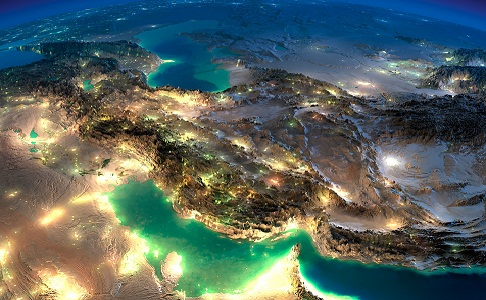
Ancient Iran: A Land of Rich History and Enduring Legacy
A Cradle of Civilization
Iran, also known as the land of Persia, boasts a remarkable history that stretches back millennia. Evidence of human habitation in Iran dates back to the Paleolithic era, with settlements established as early as 10,000 BC. This ancient land has witnessed the rise and fall of empires, the flourishing of civilizations, and the development of groundbreaking innovations that have shaped the course of human history.
Elam: A Kingdom of Antiquity
Among the earliest kingdoms to emerge in Iran was Elam, a sophisticated civilization that flourished in the southwestern region of the country from around 7200 BC. The Elamites excelled in architecture, pottery, and metalworking, leaving behind impressive archaeological sites that attest to their advanced culture.
The Rise and Fall of Empires
The Elamite kingdom eventually succumbed to the conquests of the Sumerians, Assyrians, and Medes. The Medes, under the leadership of Cyaxares the Great, established a powerful empire that unified much of Iran in the 7th century BC. However, their reign was short-lived, as they were overthrown by the Persians under Cyrus the Great.
The Achaemenid Empire: A Golden Age
Cyrus the Great’s establishment of the Achaemenid Empire marked a turning point in Iranian history. This vast empire, encompassing territories from the Indus Valley to the Aegean Sea, became one of the most powerful and influential in the ancient world. The Achaemenids were renowned for their administrative prowess, their tolerance of diverse cultures, and their promotion of religious freedom.
Alexander’s Conquest and the Hellenistic Era
The Achaemenid Empire’s reign came to an end with the conquests of Alexander the Great in the 4th century BC. Following Alexander’s death, his empire was divided among his successors, with the Seleucid dynasty establishing control over Iran. The Hellenistic period under Seleucid rule witnessed a cultural exchange between Greek and Iranian traditions, leading to the emergence of unique artistic and architectural styles.
The Parthian and Sassanian Empires: A Resurgence of Iranian Power
The Parthians, a native Iranian group, rose to prominence in the 2nd century BC, challenging Seleucid rule and establishing their own empire. The Parthian Empire, known for its military prowess and its adoption of elements of Greek and Roman culture, endured for over five centuries.
In the 3rd century AD, the Sassanian Empire emerged, reviving the Persian traditions and establishing a centralized state that rivaled the Roman Empire. The Sassanian era was marked by significant advancements in art, architecture, literature, and science. However, the empire faced internal conflicts and external threats from the Byzantines, leading to its eventual decline.
The Arab Conquest and the End of Ancient Iran
The Arab conquest of Iran in the 7th century AD marked the end of the Sassanian Empire and the transition of Iran into the Islamic era. This period saw the gradual conversion of the population to Islam and the integration of Islamic culture into Iranian society.
Ancient Iran, with its rich history, enduring legacy, and profound contributions to human civilization, continues to fascinate scholars and inspire generations. From the ancient kingdoms of Elam and Media to the grandeur of the Achaemenid and Sassanian empires, Iran’s past is a testament to its resilience, ingenuity, and cultural vibrancy. The exploration of ancient Iran reveals a land of remarkable achievements, a cradle of civilization that has shaped the world we live in today.

How Many Provinces Does Iran Have?
A Dynamic Landscape of Administrative Divisions
Iran’s administrative structure has undergone significant transformations over the past few decades, reflecting the country’s evolving needs and aspirations. In 1937, Iran consisted of only ten provinces, a number that grew steadily over time. By 1984, the country had been divided into 31 provinces, a structure that remains in place today.
A Brief History of Iran’s Provincial Divisions
1937: Iran’s administrative divisions were reorganized into ten numbered provinces: Gilan, Mazandaran, East Azerbaijan, West Azerbaijan, Kermanshah, Khuzestan, Fars, Kerman, Khorasan, and Isfahan.
1957: Additional provinces were created, including Tehran, Bushehr, Sistan and Baluchestan, and Khuzestan.
1963: Further subdivisions were introduced, resulting in a total of 23 provinces.
1973: The number of provinces increased to 27, with the establishment of new provinces such as Ardabil, Ilam, and Yazd.
1984: A major reorganization led to the creation of 31 provinces, the current administrative structure of Iran.
Current Provincial Structure
Today, Iran is divided into 31 provinces, each governed by a local center, typically the largest city within the province. These provinces are further subdivided into counties, districts, and townships, forming a hierarchical administrative framework.
| Province |
|---|
| East Azerbaijan |
| West Azerbaijan |
| Ardabil |
| Isfahan |
| Alborz |
| Ilam |
| Bushehr |
| Tehran |
| Chaharmahal and Bakhtiari |
| South Khorasan |
| Razavi Khorasan |
| North Khorasan |
| Khuzestan |
| Zanjan |
| Semnan |
| Sistan and Baluchestan |
| Fars |
| Qazvin |
| Qom |
| Kurdistan |
| Kerman |
| Kermanshah |
| Kohgiluyeh and Boyer-Ahmad |
| Golestan |
| Gilan |
| Lorestan |
| Mazandaran |
| Markazi |
| Hormozgan |
| Hamadan |
| Yazd |
Iran’s provincial divisions have evolved over time, reflecting the country’s dynamic administrative landscape and its commitment to effective governance. The current structure of 31 provinces provides a framework for local administration and service delivery, contributing to the overall development and well-being of Iran’s diverse regions.
Capital of Iran: A Journey through History and Significance
A Legacy of Shifting Capitals
Throughout its rich and storied history, Iran has witnessed the rise and fall of numerous empires and dynasties, each leaving an indelible mark on the nation’s landscape and cultural heritage. This dynamic past is reflected in the shifting of Iran’s capital city, a testament to the country’s evolving political and economic landscape.
A Glimpse into Iran’s Capital History
Ancient Capitals: The earliest capitals of Iran date back to the ancient civilizations that flourished on the Iranian Plateau. Cities such as Susa, Persepolis, and Ecbatana served as the administrative centers of powerful empires like the Elamites, Achaemenids, and Medes.
Medieval Capitals: During the medieval era, Iran’s capital shifted to cities like Isfahan, Tabriz, and Maragheh, reflecting the dominance of dynasties such as the Safavids and Ilkhanids. These cities became hubs of art, culture, and trade, showcasing the grandeur of Iran’s medieval heritage.
Modern Capital: Tehran
In the 18th century, the Qajar dynasty established Tehran as the capital of Iran, a decision that has shaped the city’s trajectory ever since. Situated in the north-central region of the country, Tehran has emerged as a cosmopolitan metropolis, a blend of ancient traditions and modern aspirations.
Tehran: Iran’s Vibrant Capital
Today, Tehran stands as Iran’s political, economic, and cultural hub. With a population of over 14 million, it is the country’s most populous city and one of the largest in the Middle East. Tehran’s vibrant energy is evident in its bustling streets, towering skyscrapers, and diverse cultural offerings.
The Significance of Tehran as Iran’s Capital
Tehran’s role as Iran’s capital extends beyond its administrative functions. It serves as a symbol of the nation’s unity, resilience, and progress. The city’s diverse population, rich history, and modern infrastructure embody the spirit of a nation that has embraced change while preserving its cultural heritage.
Iran’s capital city, Tehran, has undergone a remarkable transformation over the centuries, mirroring the nation’s own evolving identity. From its ancient roots to its modern status as a global metropolis, Tehran stands as a testament to Iran’s enduring legacy and its dynamic trajectory into the future.
Geography, Population, and Cultural Traditions of Iran
A Land of Vastness and Rich Heritage
Iran, officially the Islamic Republic of Iran, is a country situated in Western Asia. With a total area of 1,648,195 square kilometers, it ranks as the 18th largest country in the world. Its diverse geography encompasses mountains, deserts, forests, and plains, each contributing to the nation’s unique natural beauty.
A Thriving Population
Iran boasts a vibrant population of over 87.92 million people, as of 2021. This dynamic demographic is characterized by its youthfulness, with over 60% of the population under the age of 35. Iran’s population is predominantly urban, with major cities like Tehran, Mashhad, and Isfahan serving as hubs of commerce, culture, and innovation.
Strategic Location and Historical Significance
Iran’s strategic location in the Middle East and Eurasia has played a pivotal role in its history. For centuries, the country served as a vital crossroads along the Silk Road, connecting East and West and facilitating trade and cultural exchange. This rich history has left an indelible mark on Iran’s culture, cuisine, and architecture.
Cultural Traditions: A Tapestry of Customs and Beliefs
Iran’s cultural heritage is a tapestry woven from diverse traditions, customs, and beliefs. These traditions are deeply rooted in the country’s history and reflect the values and aspirations of its people.
Social Etiquette: Hospitality and respect for elders are cornerstones of Iranian social etiquette. Greetings often involve handshakes or cheek kisses, while respect for elders is evident in family gatherings and social interactions.
Family Structure: The family holds immense importance in Iranian society. Family ties are strong, and the extended family often plays a significant role in individuals’ lives. Parents, particularly mothers, are highly respected, and their guidance is valued.
Celebrations and Holidays: Iran’s cultural calendar is marked by a variety of celebrations and holidays. These include Nowruz, the Persian New Year, which marks the spring equinox; Chaharshanbeh Suri, the eve of Nowruz, celebrated with bonfires and fireworks; and Yalda, the winter solstice, a time for family gatherings and storytelling.
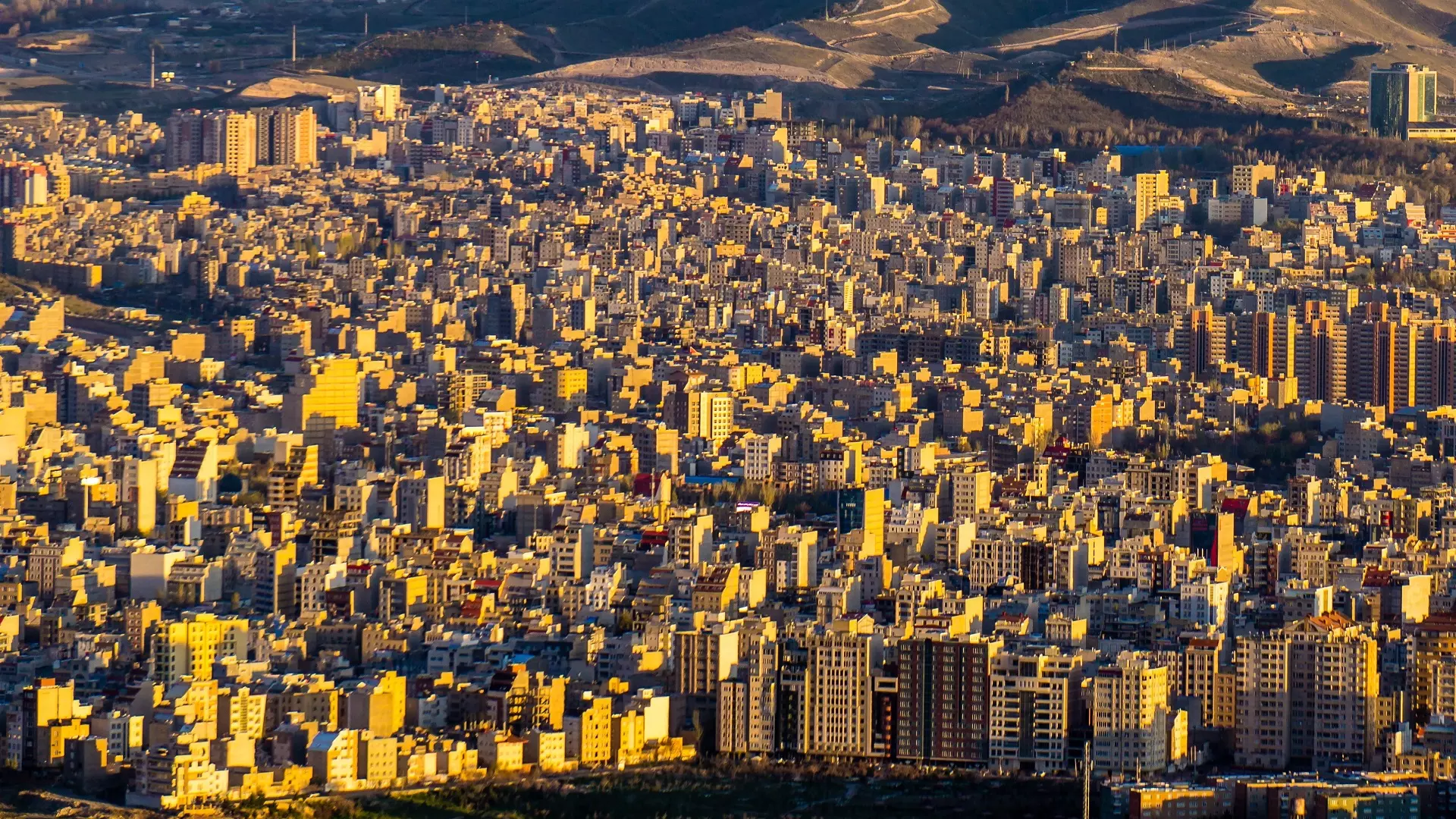
Iran, with its vast expanse, thriving population, and rich cultural heritage, stands as a land of contrasts and enduring traditions. Its strategic location has shaped its history, while its diverse customs and beliefs reflect the values and aspirations of its people. Iran’s cultural tapestry, woven from ancient traditions and modern aspirations, continues to evolve, shaping the nation’s identity and its place in the world.
Religious and Cultural Traditions in Iran
A Reverence for Religious Holidays and Historical Neglect
While religious holidays and the commemoration of imams and Islamic figures hold immense significance in Iran, many historical occasions have unfortunately faded into obscurity. The rich heritage of ancient civilizations, such as the Babylonians, remains largely unknown to much of the population.
Literary Gems: A Treasure Trove of Enduring Verse
Iran boasts a literary history that spans centuries, with luminaries like Ferdowsi, Saadi, Hafez, Rumi, Nezami, and Khayyam gracing the world with their timeless poetry. Their works continue to resonate with profound meaning and remain deeply cherished in Iranian culture.
Artistic Expressions: A Legacy of Craftsmanship
The arts have long played a central role in Iranian society, with architecture, pottery, calligraphy, weaving, painting, and music holding esteemed positions. Today, organizations and experienced individuals across the country continue to preserve and promote these artistic traditions.
Women’s Attire: Evolving through the Ages
Women’s attire serves as a reflection of a society’s customs and cultural norms. In Iran, women’s clothing has undergone significant transformations throughout history.
Median Era: During the Median era, women’s attire closely resembled that of men.
Achaemenid Period: Achaemenid women adorned themselves in luxurious garments, with the styles worn by queens often setting the trend for subsequent eras.
Parthian Era: Parthian women typically wore long, loose-fitting, pleated, and sleeved gowns with an upright collar, often layered with another garment.
Sassanian Era: Sassanian women’s attire followed a similar style, but with additional pleats secured by a long ribbon below the chest.
Zand Era: Zand women’s clothing became more form-fitting and revealing, typically made from silk and cotton fabrics.
Qajar Era: Qajar women’s dresses retained the Zand style but with shorter skirts. This period witnessed a surge in the use of jewelry as ornamentation.
Pahlavi Era: The Pahlavi era ushered in a distinct movement, with people adopting a more Westernized appearance. However, this attempt to align with global fashion trends met with resistance in Iran.
Post-Revolution Era: Following the revolution, hijab regulations became more stringent. Initially, chadors, manteaus, and long, loose-fitting gowns were the norm. However, over time, these restrictions have eased, giving rise to a modern interpretation of Islamic hijab in Iran.
Iran’s cultural landscape is a tapestry woven from diverse traditions, beliefs, and artistic expressions. While religious holidays and historical events hold significance, the country’s literary heritage and artistic legacy continue to inspire and enrich the lives of Iranians. Women’s attire, reflecting the changing tides of time, serves as a testament to the nation’s evolving identity. As Iran navigates the modern world, its cultural traditions continue to adapt and thrive, preserving a rich heritage while embracing the spirit of progress.
Languages and Religions of Iran: A Diverse Mosaic
A Linguistic Landscape of Diversity
Iran boasts a rich linguistic tapestry, with a multitude of languages and dialects spoken across its diverse regions. While Persian serves as the official language, other languages hold significant importance in the cultural fabric of the nation.
Persian: Over 50% of the population speaks Persian, the official language of Iran. It is a rich and expressive language with a long literary tradition, serving as a unifying force across the country.
Azeri: The second most widely spoken language is Azeri, spoken by approximately 24% of the population. It is predominantly used in the northwestern regions of Iran, reflecting the cultural ties to neighboring Azerbaijan.
Gilaki and Mazandarani: These languages are spoken by 7% of the population, primarily in the northern provinces of Gilan and Mazandaran. They belong to the Iranian branch of the Indo-European language family.
Kurdish: Kurdish dialects are spoken by over 3% of the population, concentrated in the western and northwestern regions of Iran. They belong to the Iranian branch of the Indo-European language family.
Arabic: Arabic is spoken by about 3% of the population, primarily in the Khuzestan province bordering Iraq. It holds religious significance for the Muslim community.
Turkmen, Balochi, and Luri: These languages are each spoken by around 2% of the population. Turkmen is predominantly spoken in the northeastern regions, while Balochi is concentrated in the southeastern provinces. Luri is spoken in various dialects across western and central Iran.
Tati and Talyshi: These languages are spoken by a small percentage of the population, primarily in the northern and northwestern regions. They belong to the Iranian branch of the Indo-European language family.
Other Languages: In addition to these major languages, smaller groups speak Laki, Qashqai, Kazakh, Hazaragi, Georgian, and Armenian. These languages reflect the diverse ethnic and cultural heritage of Iran.
Religious Landscape: A Predominantly Muslim Nation
Islam is the dominant religion in Iran, with over 90% of the population adhering to the Shia branch. This reflects Iran’s historical and cultural ties to the Shia tradition.
Sunni Islam: Sunni Muslims make up approximately 5% of the population, primarily concentrated in the western and southeastern regions.
Other Religions: Other minority religions include Baha’ism, Mandaeism, Yarsanism, Hinduism, Zoroastrianism, Judaism, and Christianity. These communities have a long history in Iran and are protected under the Constitution.
Iran’s linguistic and religious landscapes reflect the nation’s rich cultural diversity. While Persian and Shia Islam hold a prominent position, a multitude of languages, dialects, and faiths coexist, contributing to the country’s unique identity and heritage. This diversity is a testament to Iran’s long history and its ability to embrace a variety of traditions while maintaining a sense of unity and national identity.

Iran’s Diverse Climate: A Land of Contrasts
A Nation of Four Seasons
Iran boasts one of the world’s most unique climates, characterized by remarkable temperature variations across its vast territory. The difference between the warmest and coldest regions can reach an astonishing 50 degrees Celsius in winter, allowing for the cultivation of both summer and winter fruits within the same country. This phenomenon is a hallmark of temperate climates with four distinct seasons.
Arid and Mountainous Landscapes
A significant portion of Iran’s landmass is covered by arid and desert regions. These arid zones are interspersed with mountainous areas, particularly in the northern, northwestern, and western parts of the country, extending towards the southwest. In contrast, limited areas of Iran exhibit fertile plains and valleys.
Arid and Semi-Arid Precipitation Patterns
In terms of precipitation, Iran falls within the category of arid and semi-arid regions. The country cannot be considered water-rich due to its limited rainfall.
Diverse Urban Climates
Iran’s cities exhibit a variety of climates, influenced by their geographical location and proximity to the aforementioned regions. These climates range from temperate and humid to cold and mountainous, warm and humid, and warm and dry.
Specific Climate Examples
Caspian Sea Region: The Caspian Sea region enjoys a temperate and humid climate due to its proximity to the sea.
Alborz Mountains: The Alborz Mountains experience a cold and mountainous climate with heavy snowfall.
Khuzestan Province: Khuzestan Province is characterized by a warm and humid climate, particularly during the summer months.
Lut Desert: The Lut Desert, located in central Iran, is known for its extreme heat and aridity.
Iran’s diverse climate, with its stark contrasts and regional variations, shapes the country’s geography, agriculture, and ecosystems. The interplay of arid and mountainous landscapes, coupled with varying precipitation patterns, contributes to the nation’s unique natural beauty and challenges. Understanding Iran’s climate is essential for appreciating its environmental diversity and the challenges and opportunities it presents for its inhabitants.
The Economy of Iran: A Focus on International Trade, Exports, and Imports
International Trade: A Cornerstone of Economic Prosperity
International trade plays a pivotal role in a nation’s economic development. By engaging in global trade, countries can expand their markets, access new resources, and foster economic growth. This applies to both exports and imports.
Exports: Generating Revenue and Bringing in Foreign Currency
Exports involve sending goods and services produced domestically to other countries. This influx of foreign currency can be used to finance imports, invest in infrastructure, and support economic development.
Iran’s Export Landscape: A Reliance on Oil and Gas
Iran’s export sector heavily relies on oil and gas, which account for a significant portion of the country’s export earnings. While other sectors, such as services, agriculture, manufacturing, and livestock, also contribute to the economy, achieving self-sufficiency in these areas remains a challenge.
Key Export Products and Destinations
Iran’s primary export products include:
Oil
Gas
Petrochemicals
Fruits and nuts
Carpets
These products are exported to various countries, with the top destinations being:
Japan (14%)
China (12.8%)
Turkey (7.2%)
Italy (6.3%)
South Korea (6%)
Netherlands (4.6%)
Imports: Fueling Domestic Needs and Industrial Growth
Imports involve bringing goods and services from other countries into the domestic market. These imports can fulfill essential needs, provide raw materials for industries, and introduce new technologies.
Iran’s Import Landscape: Essential Goods and Services
Iran’s import needs include:
Raw materials for manufacturing
Essential consumer goods
Foodstuffs
Various consumer products
Technical services
These imports are sourced from various countries, with the main origins being:
Germany (12%)
China (10.5%)
United Arab Emirates (9.4%)
France (5.6%)
Italy (5.4%)
South Korea (5.4%)
Russia (4.5%)
International trade serves as a vital engine of economic growth for Iran. By exporting oil, gas, and other products, the country generates revenue and acquires foreign currency. Imports, on the other hand, provide essential goods, raw materials, and technological advancements that support domestic industries and consumer needs. While the export sector relies heavily on hydrocarbons, diversifying the economy and achieving self-sufficiency in other sectors remain crucial for Iran’s long-term economic prosperity.
Top 10 Tourist Cities in Iran
Iran boasts a rich history that spans millennia, leaving behind a treasure trove of ancient ruins, architectural marvels, and natural wonders. These attractions, coupled with the warm hospitality of the Iranian people, make the country a captivating destination for tourists from around the globe.
Shiraz: City of Poets and Gardens

Shiraz, renowned as the “City of Flowers and Nightingales,” is a must-visit destination for any traveler to Iran. It is home to the tombs of Persia’s most celebrated poets, Hafez and Saadi, whose works have inspired generations worldwide. Shiraz’s architectural gems include the majestic Persepolis, the ancient capital of the Achaemenid Empire, and the awe-inspiring Nasir al-Molk Mosque, renowned for its mesmerizing pink-hued tiles. The city’s verdant gardens, such as the Bagh-e Eram and the Bagh-e Delgosha, provide tranquil retreats amidst the bustling urban landscape.
Isfahan: Half the World
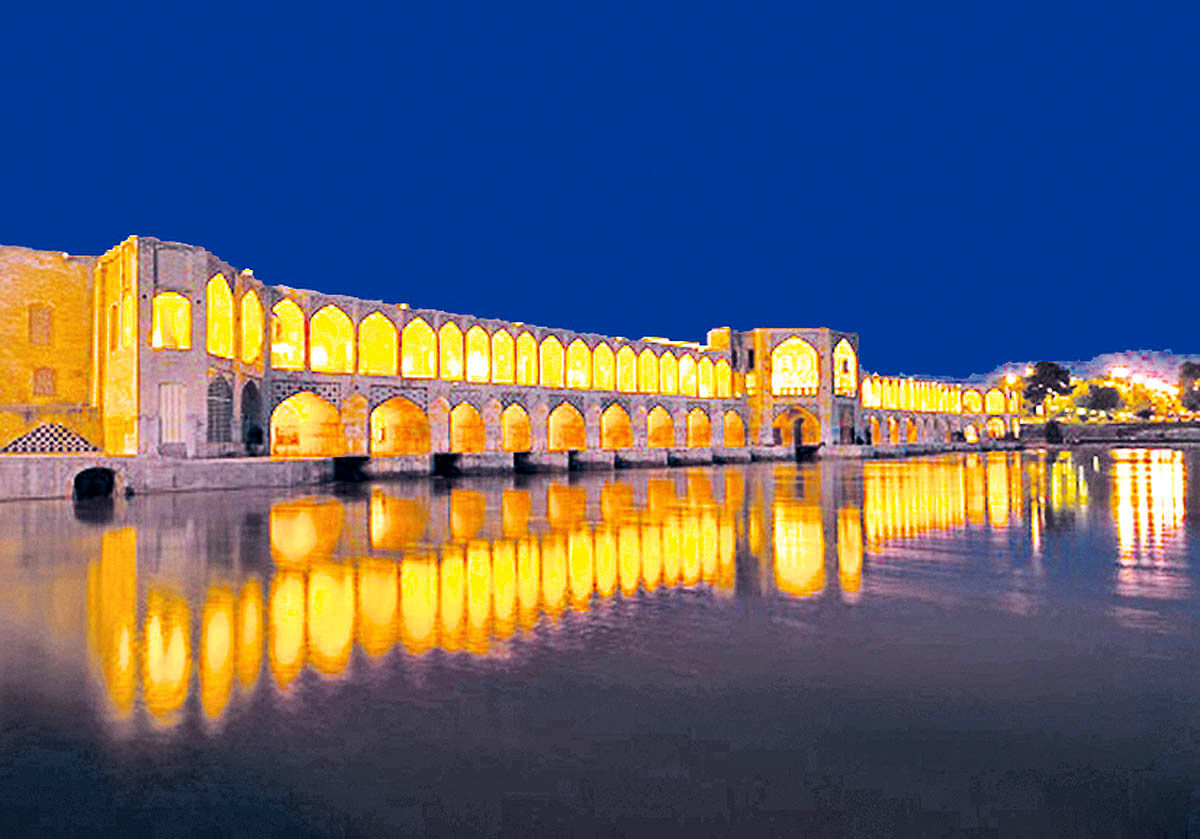
Isfahan, once the capital of the Safavid Empire, is a city of unparalleled architectural splendor. Its iconic landmarks, including the magnificent Imam Mosque, the captivating Sheikh Lotfollah Mosque, and the enchanting Khaju Bridge, showcase the zenith of Persian architectural artistry. The city’s grand boulevards, lined with traditional bazaars and adorned with historical monuments, offer a glimpse into Iran’s rich past. Isfahan’s vibrant cultural scene, with its lively teahouses, traditional music performances, and exquisite handicrafts, further enhances its allure.
Isfahan, Iran’s third-largest city, stands as a testament to the nation’s rich cultural heritage and architectural brilliance. Once the capital of the Safavid Empire during the 16th and 17th centuries, Isfahan earned the moniker “Half the World” due to its grandeur and beauty. Today, the city remains a captivating destination, drawing visitors from around the globe to marvel at its architectural gems, vibrant cultural scene, and warm hospitality.
A UNESCO World Heritage Site: A Treasure Trove of Architectural Marvels
Isfahan’s historical center, encompassing the Imam Square (Naqsh-e Jahan) and its surrounding monuments, is inscribed as a UNESCO World Heritage Site. This vast square, adorned with intricate mosaics and flanked by magnificent structures, serves as the heart of the city. The Imam Mosque, the Sheikh Lotfollah Mosque, and Ali Qapu Palace, each masterpieces of Persian architecture, grace the square’s perimeter.
Beyond the Square: A Journey through Architectural Gems
Isfahan’s architectural wonders extend far beyond the Imam Square. The city is home to a plethora of historical structures, each showcasing the artistry and craftsmanship of the Safavid era. These include:
Chehel Sotoun Palace: A grand pavilion adorned with mirrors and paintings, reflecting the opulence of the Safavid court.
Hasht Behesht Palace: A serene garden palace with eight pavilions, each representing a different aspect of paradise.
Khaju Bridge: A majestic bridge spanning the Zayandeh Rud River, offering stunning views of the city’s skyline.
Char Bagh School: A former theological seminary, renowned for its intricate tilework and geometric gardens.
A Vibrant Cultural Scene: A Tapestry of Traditions and Experiences
Isfahan’s cultural offerings are as diverse as its architectural heritage. Traditional teahouses, known as “chaikhaneh,” provide a glimpse into the city’s leisurely lifestyle, while lively bazaars offer an array of handicrafts, spices, and carpets. Traditional music performances, such as “taar” and “setar” playing, fill the air, while calligraphy workshops and cooking classes invite visitors to immerse themselves in Iranian arts and crafts.
Yazd: Desert Oasis
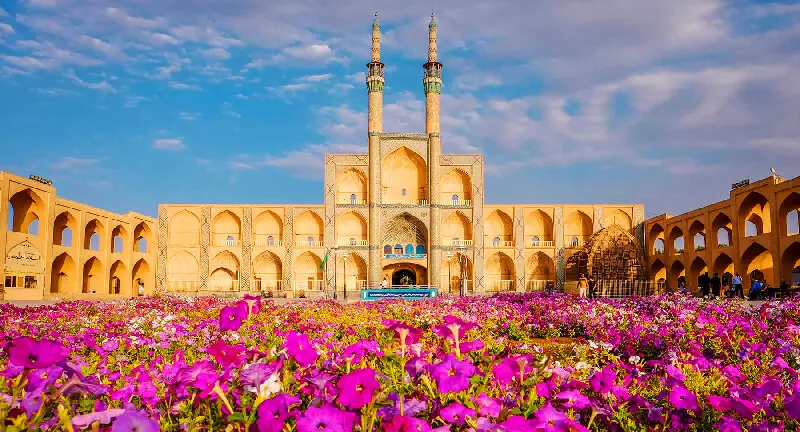
Yazd, a UNESCO World Heritage Site, is a captivating city nestled amidst the arid landscapes of central Iran. Renowned for its unique mudbrick architecture, Yazd’s labyrinthine alleyways, towering wind towers, and serene mosques exude an otherworldly charm. The city’s underground water canals, a testament to ancient engineering ingenuity, provide a fascinating glimpse into Iran’s past. Yazd’s vibrant Zoroastrian community adds to its cultural tapestry, with its fire temples and traditional ceremonies offering insights into this ancient faith.Yazd, a UNESCO World Heritage Site, is renowned for its unique mudbrick architecture, labyrinthine alleyways, and towering wind towers. The city’s historical landmarks, including the awe-inspiring Jameh Mosque, the captivating Amir Chakhmaq Square, and the serene Dowlat Abad Garden, transport visitors back in time. Yazd’s vibrant bazaars, filled with handicrafts, spices, and local delicacies, offer an immersive shopping experience.
Kerman: Gateway to the Desert
Kerman, a historic city in southeastern Iran, serves as a gateway to the vast deserts and majestic mountains of the region. The city’s grand bazaar, one of the largest in Iran, is a treasure trove of carpets, spices, and handicrafts. Kerman’s architectural gems, including the Sheikh Mosque and the Ganjali Khan Complex, showcase the city’s rich cultural heritage. The nearby Rayen Citadel, a UNESCO World Heritage Site, offers a fascinating glimpse into ancient Persian fortifications.
Kashan: Rosewater City
Kashan, renowned for its fragrant rosewater production, is a captivating city nestled between the Alborz Mountains and the central desert. Its historic houses, adorned with exquisite frescoes and intricate tilework, transport visitors back in time. Fin Garden, a UNESCO World Heritage Site, is a masterpiece of Persian garden design, with its cascading pools, lush greenery, and serene atmosphere. Kashan’s vibrant traditional bazaar is a feast for the senses, offering an array of carpets, spices, and handicrafts.
Tabriz: City of Carpets
Tabriz, nestled in the northwestern corner of Iran, is a city renowned for its rich history, cultural heritage, and exquisite carpet weaving. The Azerbaijan Museum houses an extensive collection of artifacts showcasing the region’s cultural tapestry. Tabriz’s Grand Bazaar, one of the largest in the Middle East, is a labyrinth of alleyways filled with carpets, spices, and handicrafts. The city’s Blue Mosque, adorned with millions of turquoise tiles, is a stunning architectural marvel.
Mashad: Holy City
Mashad, Iran’s second-largest city, is a revered pilgrimage destination for Shia Muslims. The Imam Reza Shrine, the holiest site in Shia Islam, attracts millions of pilgrims annually. The city’s grand mosques, including the Goharshad Mosque and the Sheikh Bahloul Mosque, showcase Islamic architectural artistry. Mashad’s traditional bazaars offer an array of religious artifacts, carpets, and handicrafts.Mashad, Iran’s second-largest city, is a revered pilgrimage destination for Shia Muslims. The Imam Reza Shrine, the holiest site in Shia Islam, attracts millions of pilgrims annually. The city’s grand mosques, including the Goharshad Mosque and the Sheikh Bahloul Mosque, showcase Islamic architectural artistry. Mashad’s traditional bazaars offer an array of religious artifacts, carpets, and handicrafts.
Qeshm: Island of Enchantment
Qeshm, Iran’s largest island, is a captivating destination renowned for its natural beauty and unique geological formations. The island’s otherworldly landscapes, including the Starj Star-Shaped Canyon and the Namak Salt Dome, leave visitors awestruck. Qeshm’s historical sites, such as the Portuguese Fort and the Qeshm Old Town . Qeshm, Iran’s largest island, is a captivating destination renowned for its natural wonders and cultural treasures. The otherworldly landscapes, including the Starj Star-Shaped Canyon and the Namak Salt Dome, leave visitors awestruck. Explore the historical Portuguese Fort, immerse yourself in the vibrant local culture, and savor the delectable seafood delicacies. Qeshm Island is a journey into the realm of the extraordinary.
Kish: A Paradise of Leisure and Adventure
Kish Island, a Persian Gulf gem, is a haven for leisure and adventure seekers. Pristine beaches, world-class shopping malls, and exciting water sports await visitors. Explore the historic Portuguese Fort, marvel at the ancient Greek shipwrecks, or embark on a thrilling desert safari. Kish Island is a paradise for those seeking relaxation and rejuvenation.

Tehran: A Vibrant Metropolis and Gateway to Iran’s Rich History
A Capital of History and Modernity
Tehran, the bustling capital of Iran, stands as a captivating blend of ancient heritage and modern dynamism. This cosmopolitan city, home to over 15 million people, offers a diverse array of attractions, from magnificent palaces and museums to vibrant bazaars and lively cultural experiences.
A Treasure Trove of Historical Sites
Tehran’s rich history is evident in its numerous historical sites, many of which date back to the Qajar and Pahlavi eras. These include:
Golestan Palace: A UNESCO World Heritage Site, this opulent palace complex served as the royal residence during the Qajar dynasty. Its intricate architecture, gardens, and museums showcase the grandeur of the era.
Saadabad Palace Complex: Nestled in the foothills of the Alborz Mountains, this sprawling complex features several palaces, gardens, and museums, offering a glimpse into the lives of the Pahlavi monarchs.
National Museum of Iran: Housing an extensive collection of artifacts spanning millennia, this museum provides a comprehensive overview of Iran’s rich cultural heritage.
A Cultural Hub: Arts, Music, and Traditional Delights
Tehran’s cultural scene is as vibrant as its history. The city boasts numerous art galleries, theaters, and concert halls, showcasing a diverse range of Iranian and international art forms. Traditional music performances, such as “taar” and “setar” playing, fill the air, while calligraphy workshops and cooking classes invite visitors to immerse themselves in Iranian arts and crafts.
Modern Attractions: Parks, Landmarks, and Urban Delights
Tehran’s modern attractions cater to diverse interests. The city’s parks, such as Mellat Park and Laleh Park, provide verdant oases amidst the urban landscape. The Milad Tower, a soaring landmark, offers panoramic views of the city. The Grand Bazaar, a labyrinth of shops and stalls, offers an authentic shopping experience.
Surrounding Charm: Exploring Villages and Natural Beauty
Venture beyond the city limits to discover the charming villages and natural beauty surrounding Tehran. Abnik, Afjeh, and Zarrin Dasht offer tranquil retreats, while the Kologan Waterfall and Tochal Ski Resort provide outdoor adventures.
Conclusion: A Gateway to Iran’s Treasures
Tehran serves as an ideal gateway to exploring Iran’s rich cultural heritage and diverse landscapes. From immersing oneself in the grandeur of historical palaces to experiencing the vibrant cultural scene and exploring the natural beauty of the surrounding areas, Tehran offers a captivating travel experience.
Tabriz: A City of History, Culture, and Culinary Delights
A Crossroads of Civilizations
Tabriz, nestled in northwestern Iran, boasts a rich history that spans millennia. Once the capital of several Persian empires, Tabriz has served as a crossroads of civilizations, blending influences from East and West. Today, the city is a vibrant hub of commerce, culture, and education, known for its exquisite carpets, delicious cuisine, and warm hospitality.
A Tapestry of Historical Marvels
Tabriz’s historical heritage is evident in its numerous landmarks, including:
Tabriz Grand Bazaar: The world’s largest covered bazaar, this labyrinthine complex offers an immersive shopping experience, filled with carpets, spices, handicrafts, and local delicacies.
El-Goli Park (Shah Goli): A serene oasis in the heart of the city, this park features a majestic lake, pavilions, and manicured gardens, providing a tranquil escape from the urban bustle.
Blue Mosque (Masjid-e Kabud): Adorned with intricate turquoise tiles, this 15th-century mosque is a masterpiece of Persian architecture.
Ark Ali Shah (Tabriz Tabriz Fortress): Once the seat of power for the Safavid dynasty, this imposing fortress offers stunning views of the city.
A Culinary Paradise: A Fusion of Flavors
Tabriz’s cuisine is a delightful fusion of Persian, Turkish, and Azerbaijani influences. The city is renowned for its delectable dishes, such as:
Azmagh Kebab: Grilled lamb cubes marinated in yogurt and spices, served with rice and grilled vegetables.
Khoresht Gheymeh: A rich stew of lamb, chickpeas, and dried fruits, flavored with saffron and turmeric.
Tabrizi Ash: A hearty soup made with wheat, lentils, herbs, and spices, often served with fried onions and yogurt.
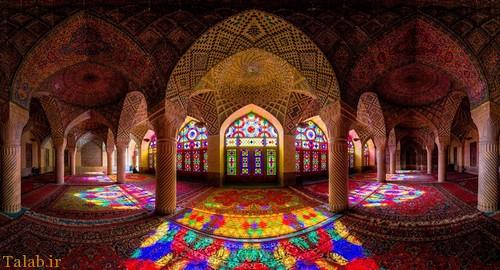
A Warm Welcome: Hospitality and Cultural Delights
Tabriz’s people are known for their warm hospitality and genuine kindness. Visitors are greeted with smiles and open arms, eager to share their love for their city and its rich traditions. This welcoming spirit adds an unforgettable touch to the overall Tabriz experience.
Iran, with its rich history, diverse cultures, and breathtaking landscapes, offers an unforgettable travel experience. From exploring ancient cities to discovering natural wonders, from indulging in cultural delights to savoring culinary treasures, Iran will captivate your senses and leave you with memories that will last a lifetime. Embark on this journey of discovery and unveil the hidden gems of this extraordinary land.
In addition to the destinations mentioned above, Iran offers a plethora of other captivating destinations, each with its unique charm and attractions. From the ancient ruins of Persepolis to the vibrant bazaars of Isfahan, from the snow-capped peaks of Alborz Mountains to the sun-kissed beaches of the Caspian Sea, Iran is a treasure trove waiting to be explored. Plan your itinerary, pack your bags, and embark on an adventure that will leave you forever changed.
Iran: A Cultural Tapestry, Culinary Delights, and Historical Treasures
Iran, a nation steeped in ancient history, captivating culture, and diverse landscapes, offers an unforgettable travel experience. From the bustling metropolises to the serene villages, from the majestic mountains to the sun-kissed beaches, Iran unveils a tapestry of experiences that will leave you spellbound.
Cultural Gems and Hospitality
Warm Hospitality: Iranians are renowned for their warm hospitality and genuine kindness. Visitors are greeted with smiles and open arms, eager to share their love for their country and its rich traditions. This welcoming spirit adds an unforgettable touch to the overall Iran experience.
Musical Diversity: Iran boasts a rich musical heritage, encompassing seven traditional Persian dastgah (musical modes). From the soulful melodies of classical Persian music to the lively rhythms of traditional folk songs, Iran’s musical tapestry reflects the diversity of its culture.
Culinary Delights: Iranian cuisine is a symphony of flavors, aromas, and textures. From the fragrant saffron-infused rice dishes to the succulent kebabs and the delectable sweets, Iranian cuisine is a feast for the senses.
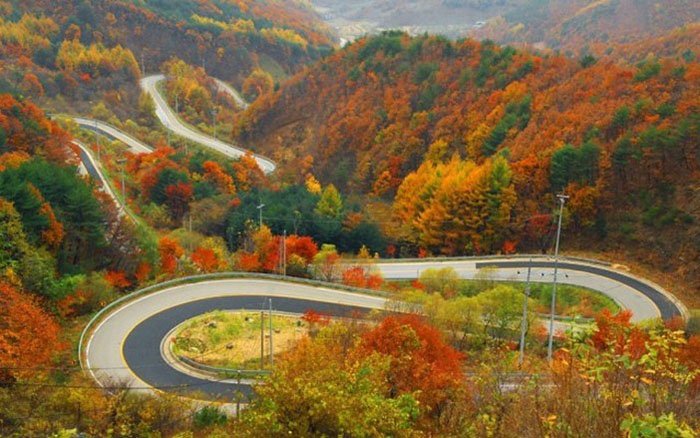
Natural Wonders and Historical Treasures
Diverse Landscapes: Iran’s landscapes are as diverse as its culture. From the lush greenery of the Caspian Sea region to the arid expanses of the central deserts, from the snow-capped peaks of the Alborz Mountains to the sun-kissed beaches of the Persian Gulf, Iran’s natural beauty is breathtaking.
Ancient History: Iran’s history stretches back millennia, leaving behind a treasure trove of ancient ruins, architectural marvels, and archaeological sites. From the grandeur of Persepolis to the majesty of Isfahan, Iran’s historical legacy is a testament to its enduring civilization.
Neighbors: A Bridge between Cultures
Iran shares borders with 15 neighboring countries, creating a unique blend of cultures and traditions. These connections have shaped Iran’s history, cuisine, and language, further enriching its cultural tapestry.
Conclusion
Iran, with its warm hospitality, rich culture, diverse landscapes, and ancient history, offers an unforgettable travel experience. From immersing oneself in the vibrant traditions to exploring the breathtaking natural wonders, Iran will captivate your senses and leave you with memories that will last a lifetime. Embark on this journey of discovery and unveil the hidden gems of this extraordinary land.

